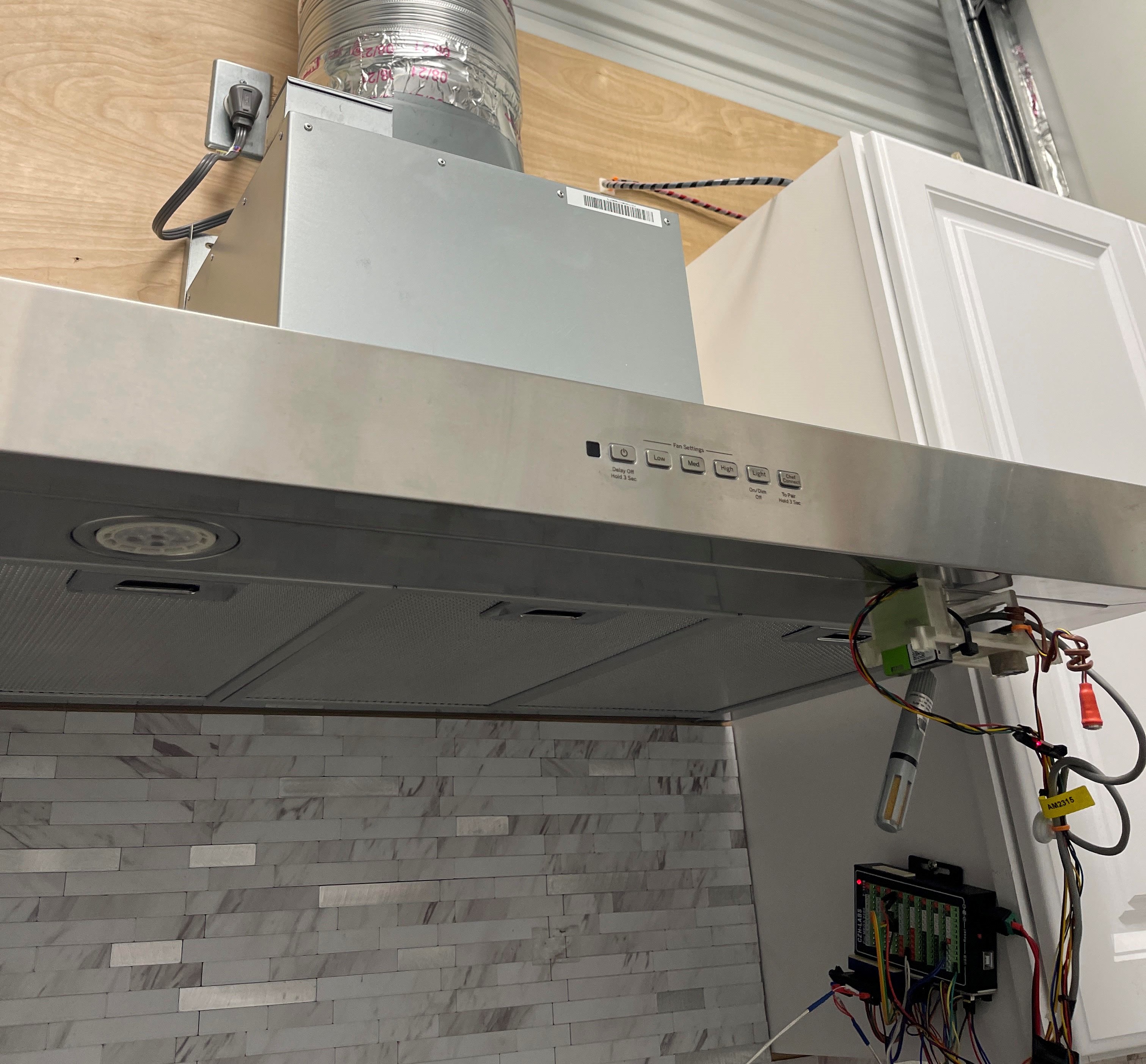 Project Title
Project Title
Sensor Based Range Hoods
Project Number ET20PGE8201 Organization PG&E End-use Cooking Equipment, Plug Loads and Appliances Sector Residential Project Year(s) 2021 - 2022This study investigated the technical and market feasibility and consumer acceptance of residential sensor-based range hoods to automate range hood operation to improve indoor air quality (IAQ) and occupant health. Goals of the study included:
- Identifying existing and emerging products that use integrated sensors for automated control of kitchen range hoods that exhaust to outdoors
- Assessing performance, economics, adoption feasibility, and consumer acceptability of these products
- Recommending solutions that could be included in future Title 24, Part 6 code change proposals and IOU incentive programs
TRC initially conducted an in-depth review of existing sensor-based range hood products on the market, research studies on IAQ and health impacts from cooking-related pollutants, and other literature on sensor-based range hood technology and collected additional data via market actor interviews. Building on the findings of that initial research, TRC coordinated a laboratory test of a selection of five sensor-based range hood products, in collaboration with PG&E’s ATS lab. The goal of the lab test was to assess the functionality and performance of different types of sensor-based range hood products. In addition to the lab test, TRC conducted a consumer acceptance survey to determine consumer attitudes about automated sensor-based range hoods generally, as well as preferences and attitudes toward specific sensor-based range hood product features and operation profiles.
Key project findings include the following:
- Although several of the products tested achieved the goals of removing pollutants and improving IAQ, performance varied between the different hood products
- Clear performance standards need to be established for run times and pollutant removal to ensure that sensor-based range hood products are performing as intended before they can be included in utility programs or required through building codes
- Consumer acceptance factors such as noise, configuration or setup, higher upfront cost, and consumer education will also need to be addressed to achieve wider adoption of sensor-based range hoods
- Considering these factors, sensor-based range hoods are not ready be included in utility programs or included as a mandatory requirement in building codes at this point in the technology maturation cycle
In general, sensor-based range hoods could be an elegant solution to solving the problem of some consumers rarely operating their range hoods when cooking. However, given the variety of performance identified, the IOUs should develop criteria to identify which types of sensor-based products are considered effective, and particularly those that should be encouraged or required through programs or codes.
Keyword Search:
Indoor air quality, IAQ, range hood,
